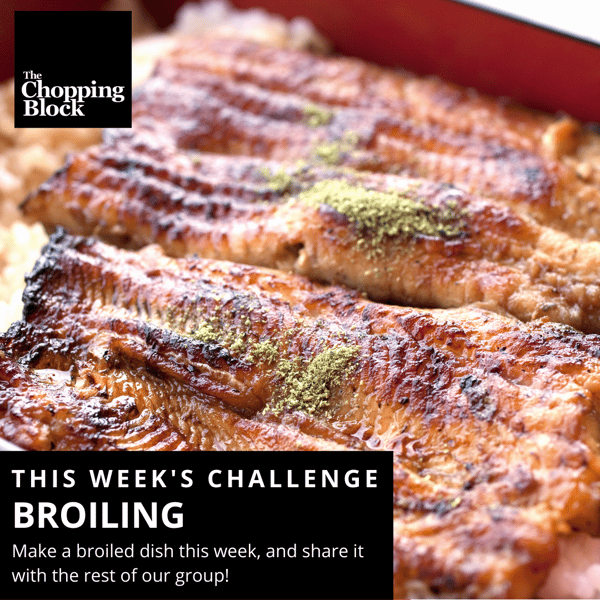I feel broiling is a very underutilized cooking technique for everyday cooking. How often can you say you use your broiler at home? It can be daunting if you do not know how to use it, but when used properly, the broiler setting on your oven is a great way to add a crisp finish to your favorite foods.
Broiling is often either misused or unused, thanks to a bad rap and an unnecessary intimidation factor. I like to think of my broiler like an upside-down grill. By definition, broiling is a method of cooking that directly exposes your food to super high heat but typically only from the top rather than the bottom. This makes it perfect for browning, charring, or quick-cooking foods like salmon. Check out this link for the best broiled salmon recipe! Hopefully you will feel more comfortable and confident using your broiler after learning some basics. As with all cooking, it is about the technique and not so much following a recipe.
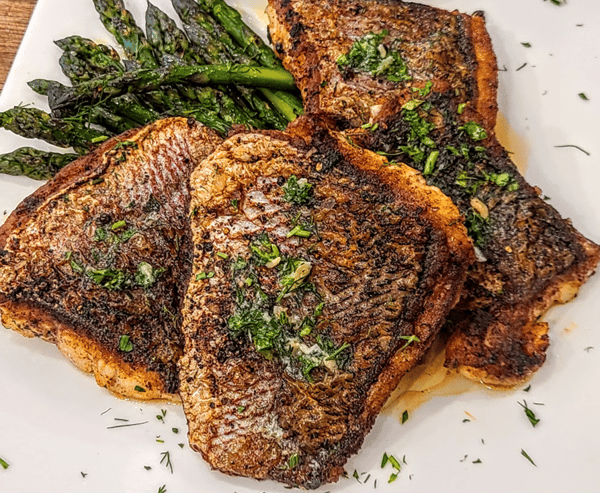 First, you want to locate the broiler in your oven. While it's typically at the top of the oven cavity, some ovens have separate broiler drawers located under the main oven. In my very first, very old apartment that I used to live in, I had the type of broiler that was under my oven. Here is some friendly advice if you have one these types of broilers: make sure to keep it clean and free of any dust that might collect from under it. I did not realize how quickly dust bunnies go up in flames! Needless to say, I did not use my broiler at home ever again. I am not trying to scare you away from this method of cooking because broilers have come a long way since then. My oven now has the broiler located at the top center part of my oven, and I use this method of cooking at least once a week. If you do have the broiler drawer, don’t fret! Just keep your eyes peeled for how fast your foods are cooking in there.
First, you want to locate the broiler in your oven. While it's typically at the top of the oven cavity, some ovens have separate broiler drawers located under the main oven. In my very first, very old apartment that I used to live in, I had the type of broiler that was under my oven. Here is some friendly advice if you have one these types of broilers: make sure to keep it clean and free of any dust that might collect from under it. I did not realize how quickly dust bunnies go up in flames! Needless to say, I did not use my broiler at home ever again. I am not trying to scare you away from this method of cooking because broilers have come a long way since then. My oven now has the broiler located at the top center part of my oven, and I use this method of cooking at least once a week. If you do have the broiler drawer, don’t fret! Just keep your eyes peeled for how fast your foods are cooking in there.
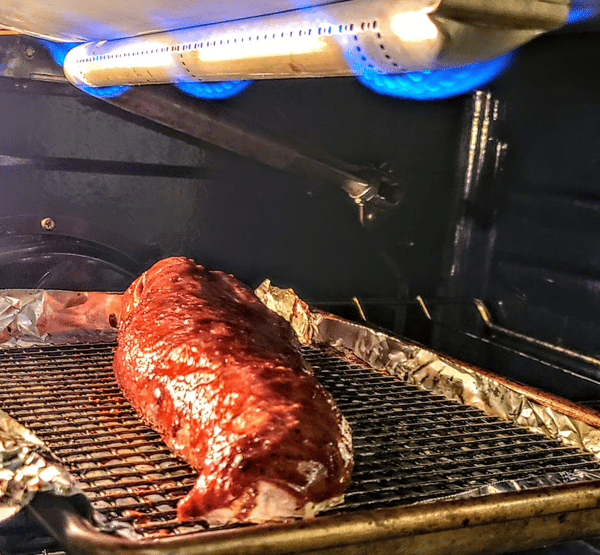 Which brings me to my next point: preheat your broiler once you have located it. This does not take as long as a normal oven preheat but it will provide the maximum direct heat as well as uniform ambient heat in the oven. Most often when I go to use my broiler, my oven has already been on; so, it is already warm and I am just looking for that direct heat from the top source to finish the cooking process. Get to learn the nuances of your particular unit. Preheating times can vary based on your oven, so check your user guide to see how much time you’ll need. While most broilers operate using an on/off switch, some ovens do have a low/high function or allow you to set a particular temperature.
Which brings me to my next point: preheat your broiler once you have located it. This does not take as long as a normal oven preheat but it will provide the maximum direct heat as well as uniform ambient heat in the oven. Most often when I go to use my broiler, my oven has already been on; so, it is already warm and I am just looking for that direct heat from the top source to finish the cooking process. Get to learn the nuances of your particular unit. Preheating times can vary based on your oven, so check your user guide to see how much time you’ll need. While most broilers operate using an on/off switch, some ovens do have a low/high function or allow you to set a particular temperature.
Take this braised piece of pork belly below for example. Cooked slow and slow in the oven in a delicious broth makes the texture on the inside tender and moist. For some textural difference and added flavor, I glazed the top and placed it under the broiler for about 10 minutes in order to gain a crispy crunchy top crust. Taking that extra step really elevated the end result.
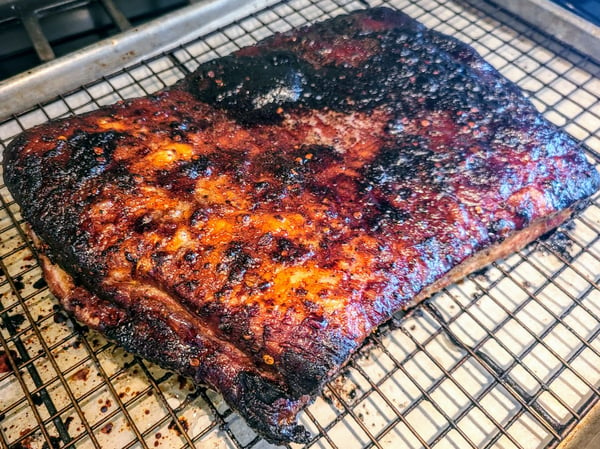 Using the right cookware is really important with cooking with your broiler. Avoid using glass cookware, as the intense heat can cause it to crack or shatter. Broiler pans have smaller slits for the drippings to get trapped in which prevent flare ups. If you don’t have a specific broiling pan, you can use a shallow metal baking pan or sheet tray and a baking rack to hold your food. My pro tip is to foil the sheet tray before putting your rack on top, this will definitely help with the clean up!
Using the right cookware is really important with cooking with your broiler. Avoid using glass cookware, as the intense heat can cause it to crack or shatter. Broiler pans have smaller slits for the drippings to get trapped in which prevent flare ups. If you don’t have a specific broiling pan, you can use a shallow metal baking pan or sheet tray and a baking rack to hold your food. My pro tip is to foil the sheet tray before putting your rack on top, this will definitely help with the clean up!
I love broiling vegetables because it is way quicker than just roasting, but there are some factors to consider such as whether to par-cook or cook from a raw state. Take the asparagus below. All I did was trim the ends, lightly oil and season them and put them right under the broiler raw. But you may also quickly blanch green vegetables before broiling them. Broiling is a great way to refresh leftover veggies, too!
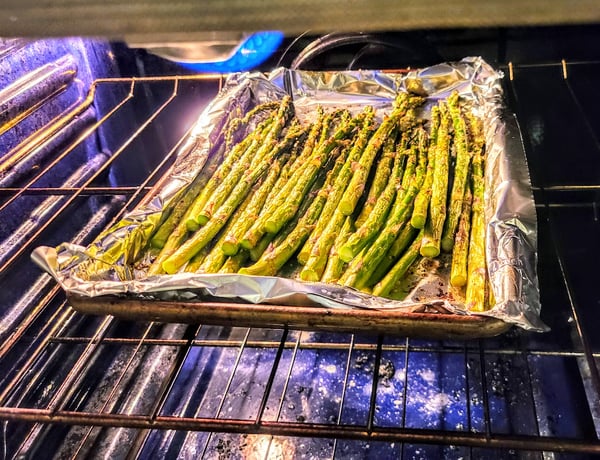 Also, remember to adjust your oven racks. In general, aim to have a 3- to 5-inch gap between your broiler and the top of your meat. I usually use the top rack for most broiling purposes. Thinner cuts and foods that benefit from heavy browning and caramelization should be placed closer to the broil element. Thicker cuts and bone-in meats take longer to reach their required cooking temperature, and will benefit from being located farther from the broil element. This allows them to cook to the center and reduce the chance of burning.
Also, remember to adjust your oven racks. In general, aim to have a 3- to 5-inch gap between your broiler and the top of your meat. I usually use the top rack for most broiling purposes. Thinner cuts and foods that benefit from heavy browning and caramelization should be placed closer to the broil element. Thicker cuts and bone-in meats take longer to reach their required cooking temperature, and will benefit from being located farther from the broil element. This allows them to cook to the center and reduce the chance of burning.
Overall, the closer you place your food to the broiler, the faster the outside will cook. Because food cooks so quickly under the broiling element you really want to make sure you are monitoring your food more often than conventional roasting. Some ovens even suggest leaving the door open to release some of the heat; make sure to check your user manual for their recommendations.
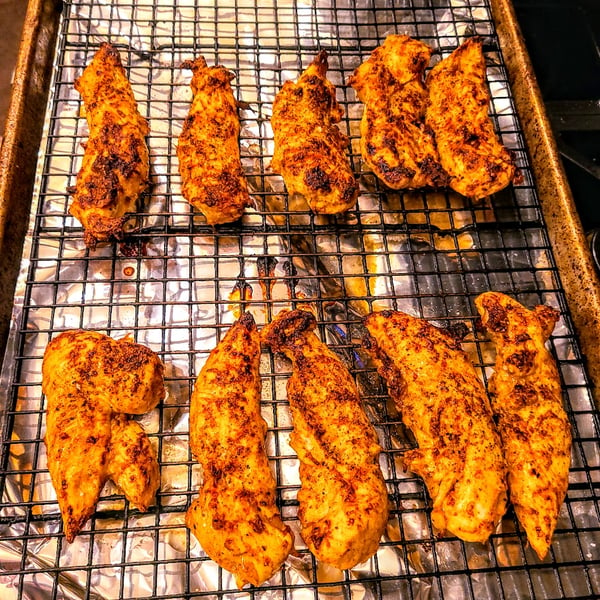 So, what foods can be broiled? For proteins, think thin: steaks, pork chops, fish fillets, and chicken cutlets are all great in the broiler, as are shrimp. Why thin? If cuts are too thick, they may scorch before cooking through. And don't forget everything else! Try broiled pineapple or bananas next time you want a quick dessert. Besides proteins, fruits, and vegetables, the broiler can be used to brûlée, melt cheese, instantly char vegetables, make garlic bread, toast your casserole crust and cook tofu. The possibilities are endless.
So, what foods can be broiled? For proteins, think thin: steaks, pork chops, fish fillets, and chicken cutlets are all great in the broiler, as are shrimp. Why thin? If cuts are too thick, they may scorch before cooking through. And don't forget everything else! Try broiled pineapple or bananas next time you want a quick dessert. Besides proteins, fruits, and vegetables, the broiler can be used to brûlée, melt cheese, instantly char vegetables, make garlic bread, toast your casserole crust and cook tofu. The possibilities are endless.
For these chicken tenders above, I marinated them with yogurt, biriyani spice and salt. When placed under the broiler for just 10 minutes, the exterior was perfectly crispy and the interior was exceptionally juicy! Remember, it’s about the technique not a recipe in particular.
Here is how I approach broiling:
- Start on high, once your protein is browning nicely, this is when you want to take the temperature of your protein to gauge how long it should remain under the broiler.
- Pull the proteins out when they are just a few degrees under your desired temperature. This way you can let them rest for a few minutes to stay nice and moist and carryover cook to the proper temperature.
- Have fun with the seasonings and marinades, but remember if your exterior is to wet or oily this can cause flare ups if placed too closely to the heating element.
If you are interested in learning more culinary techniques to enhance your cooking repertoire, join us for Culinary Boot Camp where we go really in-depth to each cooking method to make you a more self-sufficient home cook. It is absolutely my most favorite class we offer at The Chopping Block.
In our Virtual Cook Along: April in Paris Workshop you will learn how to broil French Onion Soup like a pro!
In the meantime, try your hand at broiling for this week’s #TCBcookingchallenge in our private Facebook group. What will you cook in your broiler? I can’t wait to see!


